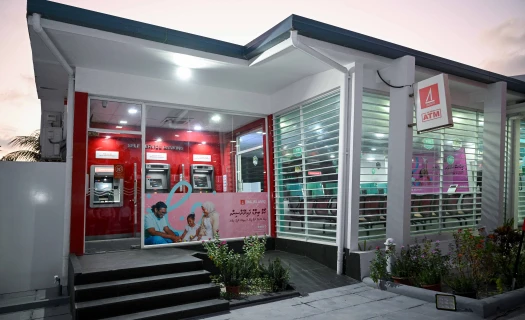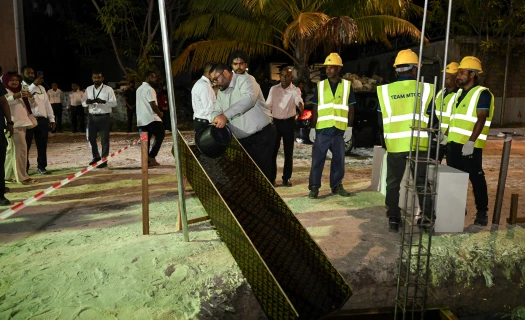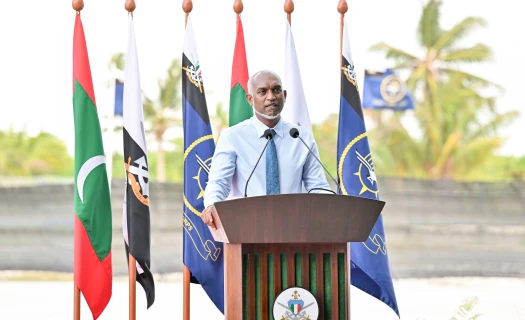Wed, 05 Nov 2025
|DHIVEHI
Eid in Malaysia: When three days turn into thirty
30 Mar 2025
|

A Raya spread --- Photo: Envato Elements
The first time I experienced Eid al-Fitr (Hari Raya Aidilfitri) in Malaysia, I was caught off guard by how long it lasted. Back home in the Maldives, Eid is festive, but it does not stretch on for weeks. Here, what is meant to be a three-day celebration turns into a month-long affair. Malaysians, it seems, do not celebrate Eid by halves.
The journey home is the first sign of how seriously Malaysians take Eid—just like in the Maldives, I might add. They call it balik kampung (the journey back to one’s hometown), and it starts days before Eid, with cities emptying as people return to their hometowns, with some spending over 12 hours on the road.
A Malaysian friend once joked, “Every minute stuck in that jam is worth all the food waiting for me.”
I do not have a kampung (home) to return to, but I am always excited to learn about these trips. My friends tell me that the highways are lined with makeshift food stalls selling snacks and that every radio station plays the same nostalgic songs like Dendang Perantau by P. Ramlee and Balik Kampung by Sudirman. Even though I am not heading home, it is impossible to miss out on this. Whether in a Grab or at the mall, those songs fill the air.
Eid morning itself is a sea of colour. Everyone dresses in baju kurung (traditional Malay attire) and heads to mosques for Solat Sunat Aidilfitri (Eid prayers). I have never been to the mosque here for Eid, but I have witnessed the gatherings and seen the photos on social media. The atmosphere is warm, with strangers exchanging greetings and families embracing after prayer.
One unique tradition is maaf zahir dan batin, where people ask for forgiveness from one another. Another custom, which I only recently discovered, is visiting graveyards after prayers. Families gather around the graves of loved ones, clean the tombstones, and take a moment to pay their respects. Some even have breakfast there, while others return home to eat.
And then, the feasting begins.
Food is the centrepiece of Eid in Malaysia. Over the years, every house I have visited has had tables overflowing with food. The rendang (beef or chicken dish cooked in coconut milk and spices until the sauce thickens and caramelises) was an instant favourite, usually paired with ketupat (diamond-shaped rice cakes wrapped in woven palm leaves) or lemang (glutinous rice and coconut milk cooked inside bamboo tubes lined with banana leaves)—as is customary. Then, there is satay (skewered and grilled marinated meat), sizzling and utterly tempting. I love dipping it into the spicy peanut sauce, generously ladling it onto my plate.
The dishes vary by region: nasi dagang (fragrant rice steamed in coconut milk, served with tuna curry) in east coast households, soto (spiced broth with shredded chicken, noodles, and sometimes served with fried potato balls called bergedil) in Sabah, lontong (compressed rice cakes served in a coconut milk-based vegetable stew, sometimes with a boiled egg or peanuts added) in different styles across the country. As a guest, refusing food is not an option, something I find very similar to Maldivian culture.
“Never say you’re full,” I was warned. “They’ll just take it as a challenge to make you eat more.”
By the second or third house, I understood. Every host insists, “Just a little bit more,” piling my plate with everything from savoury dishes to desserts. Speaking of desserts, Kuih Raya (festive bite-sized cookies and pastries) is a whole world of its own—kueh lapis (layered cake with rainbow colours), pineapple tarts (pastries filled with sweet pineapple jam), and my favourite, biskut makmur (powdered sugar-covered cookies filled with ground nuts). I usually pair it with a cup of teh o (hot black tea).
One treat that reminds me of home is dodol—sticky, rich with palm sugar, and requiring patience to make and eat, much like the Maldivian huni hakuru.
At a friend’s house, her aunt once proudly said, “We stirred it for hours, but I love making it.”
What surprises me the most is how long the celebrations last—a sentiment echoed by many Maldivians living in Malaysia.
“By the third or fourth week of Shawwal, I was still being invited to eat,” a Maldivian student once laughed. “It was a bit of a culture shock but a delightful one.”
The commercialisation of Eid is evident everywhere. Even before Eid arrives, malls transform with sparkly decor, and families spend their pay cheques on new clothes, curtains, and household items—much like Maldivians do before Ramadan.
By late Ramadan, firecrackers fill the night air despite regulations, and children run around with sparklers. It is loud, chaotic, and completely mesmerising. Fireworks are nothing new in Malaysia, given its multicultural society and year-round celebrations. Still, they never fail to bring a smile to my face.
Beyond the indulgence, I have discovered a deeper meaning. Duit Raya (money given to children), tucked into colourful envelopes and handed to children, is more than just money; it is a token of blessing. The feasts are not about excess; they are about sharing and generosity.
Every home I enter makes me feel welcome. Yet, a part of me still feels like an observer rather than a participant. My mind often wanders back to the Maldives, where Eid feels familiar, where I know most of the customs and songs by heart. In Malaysia, I feel the sense of community but not the intimacy of home.
A Maldivian who works in Malaysia summed it up best: “Accept every invitation. Each home has its own traditions, and each dish has the potential to change your life forever.”
Perhaps that is what Eid in Malaysia is truly about: welcoming everyone and ensuring no one celebrates alone. By the end of the month, I no longer feel like just a guest. I have eaten, laughed, and celebrated my way into something bigger than myself.
For anyone in Malaysia during Eid, my advice is simple: come hungry.


Popular News







